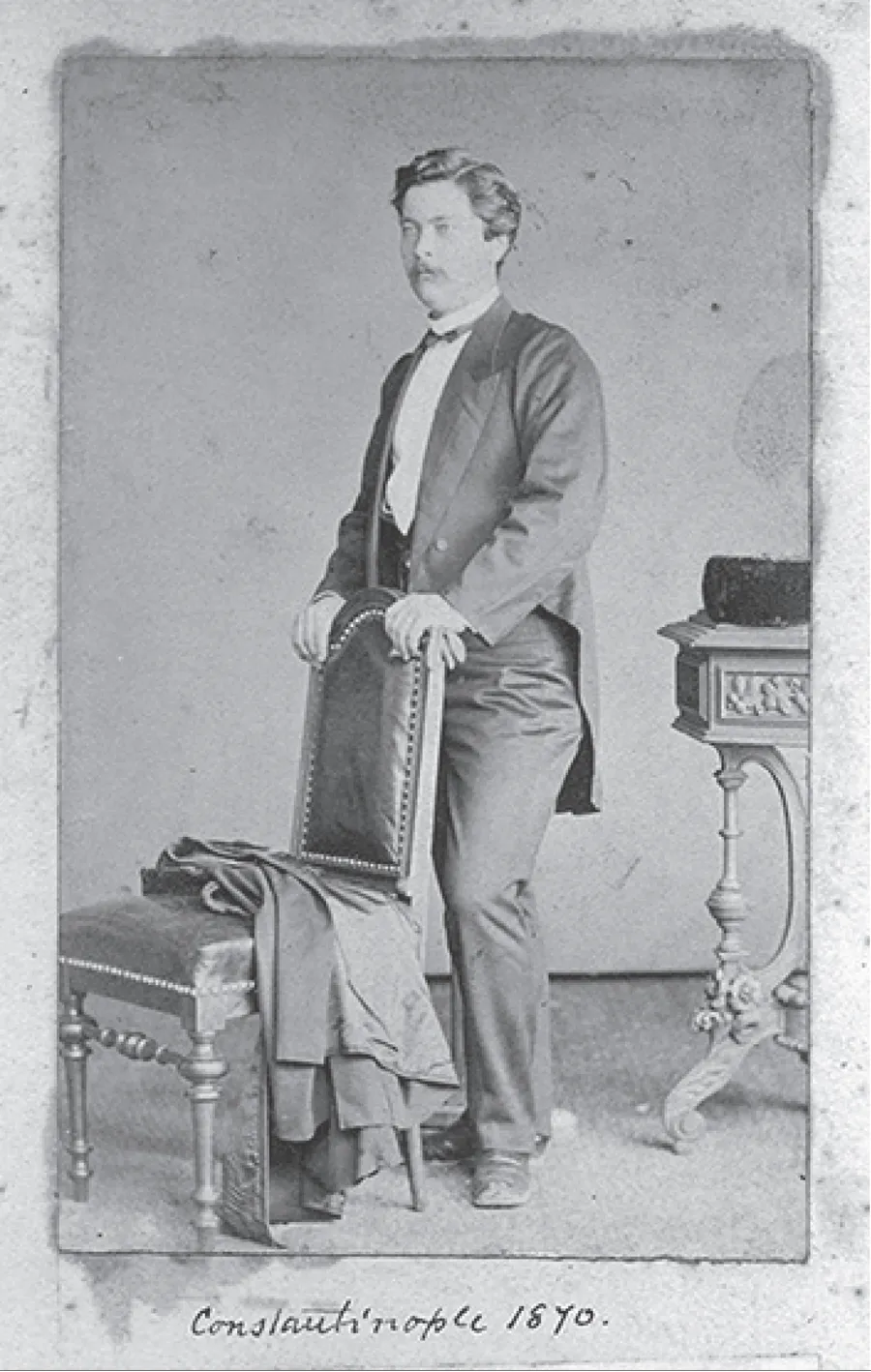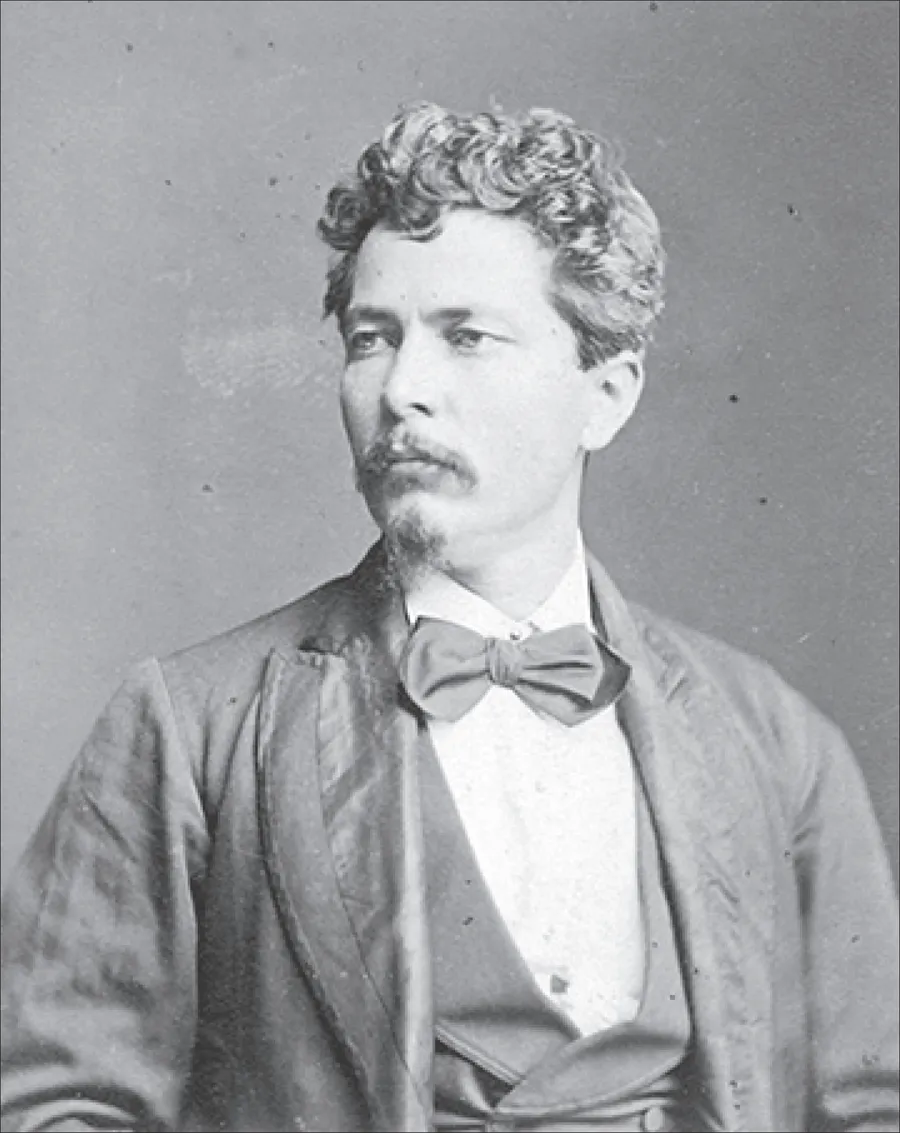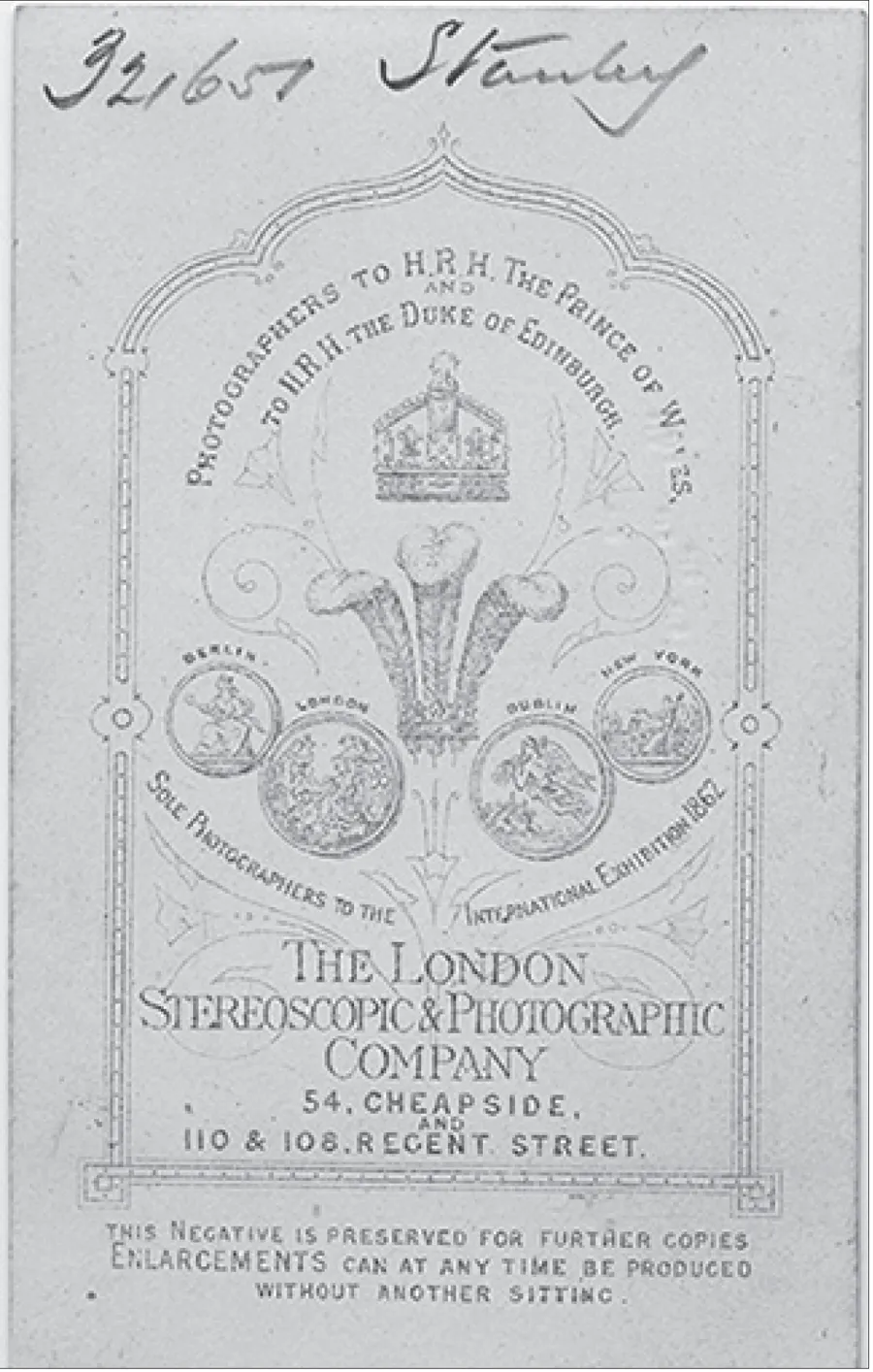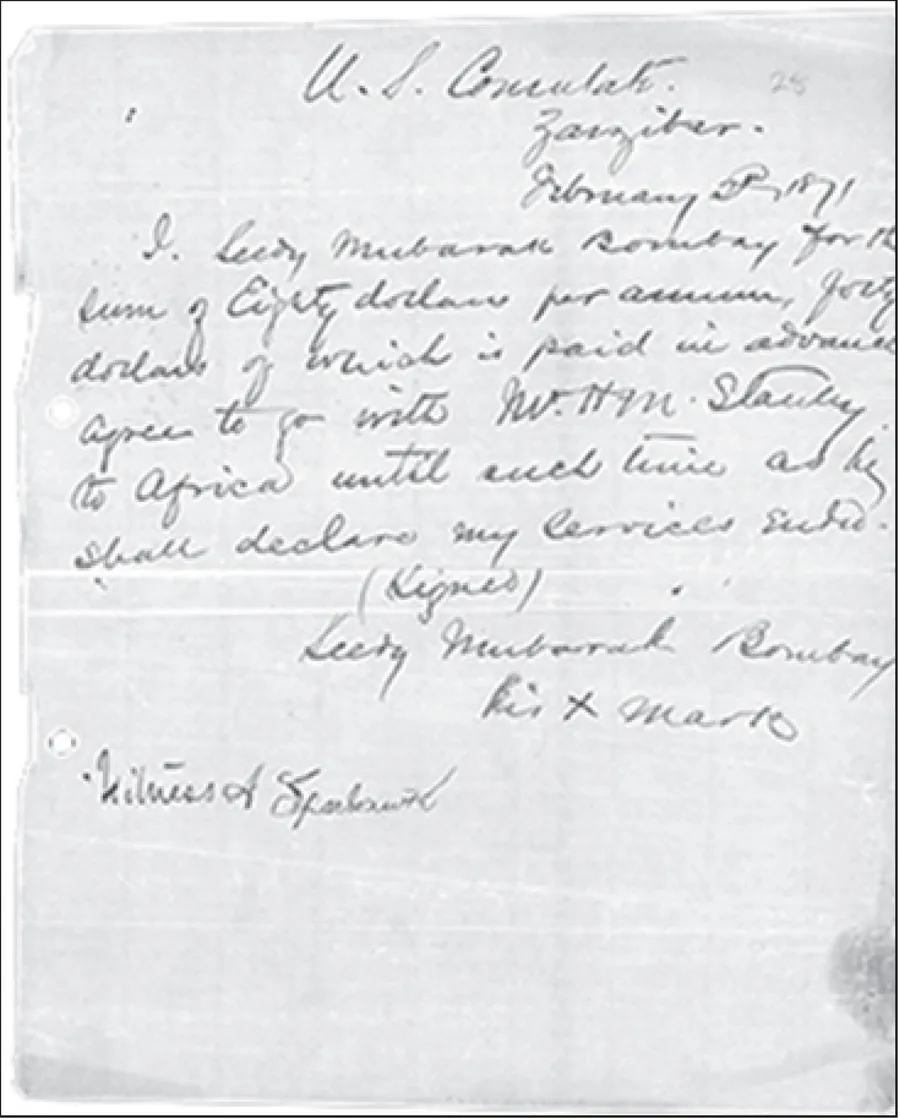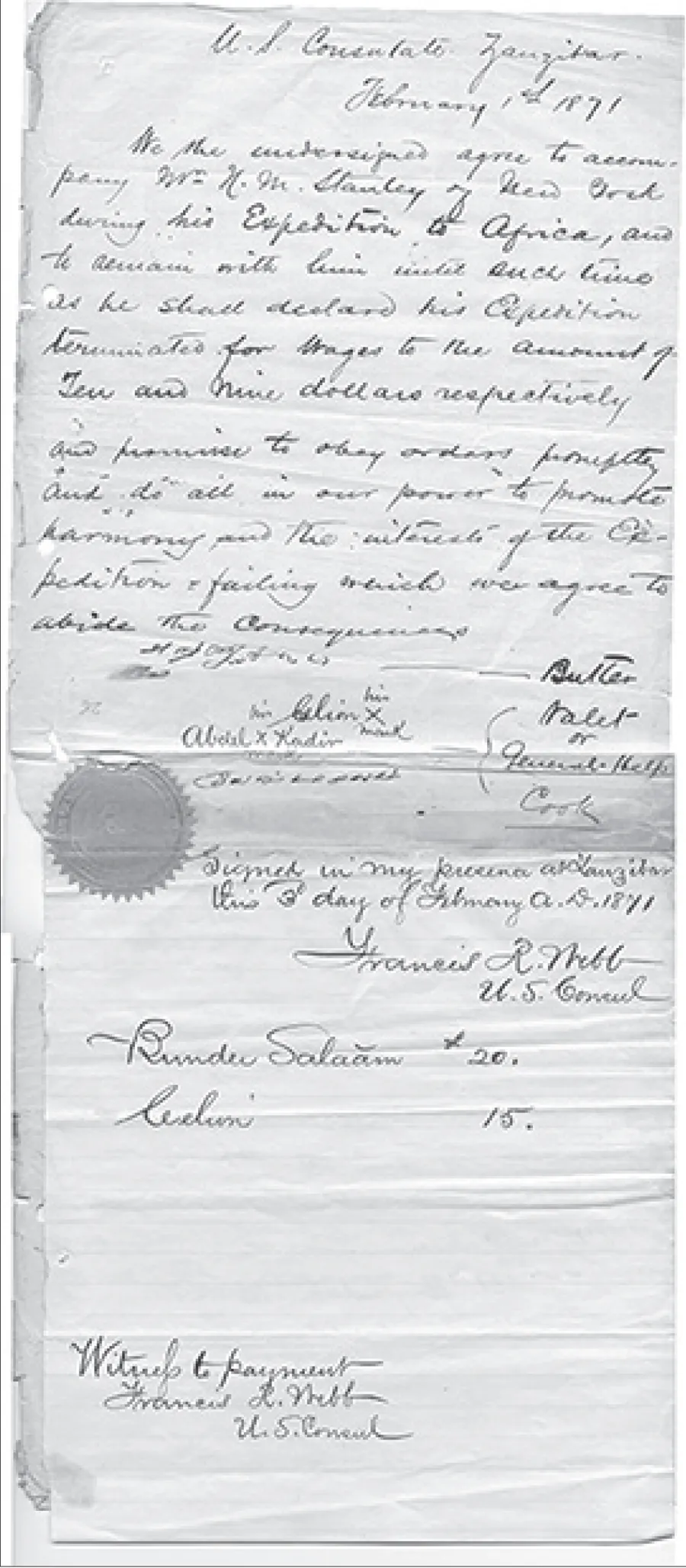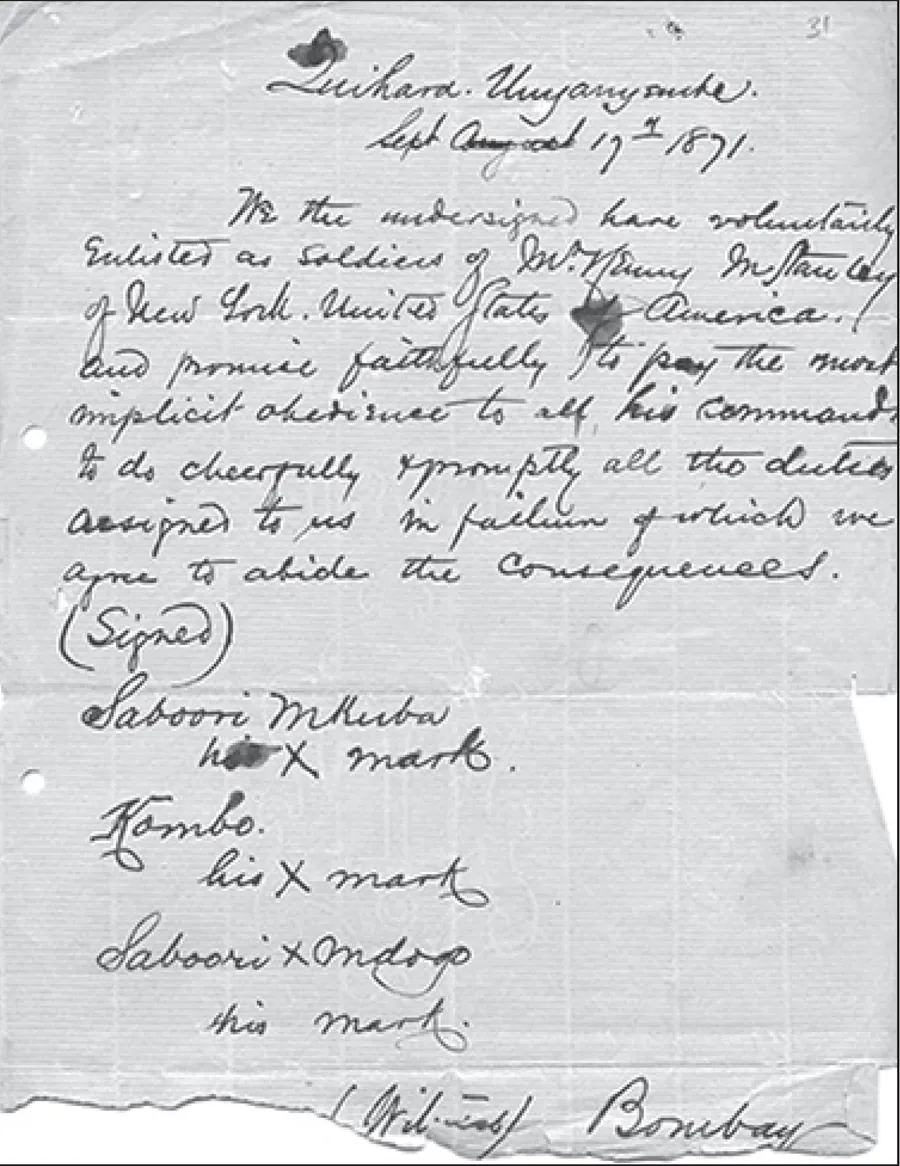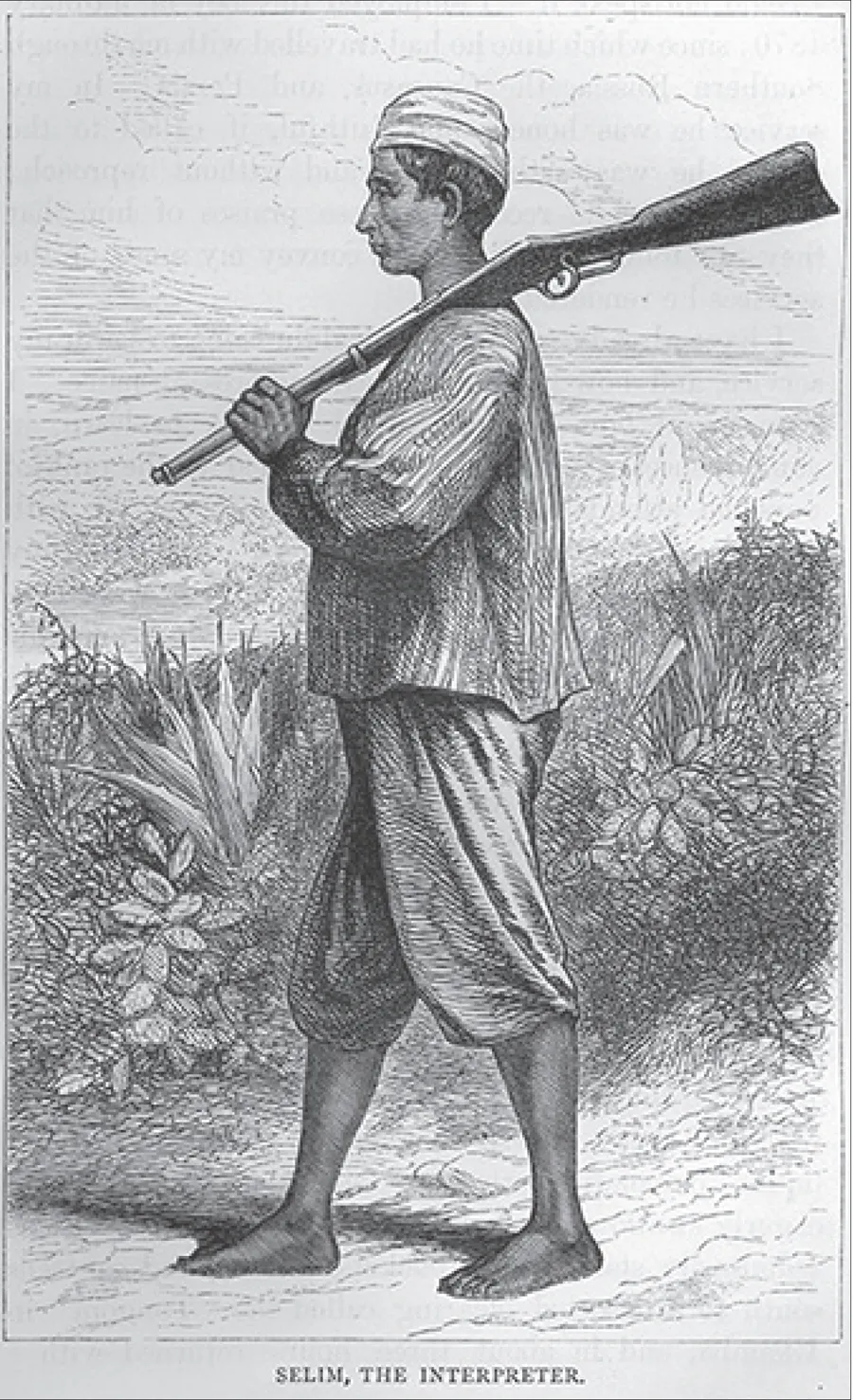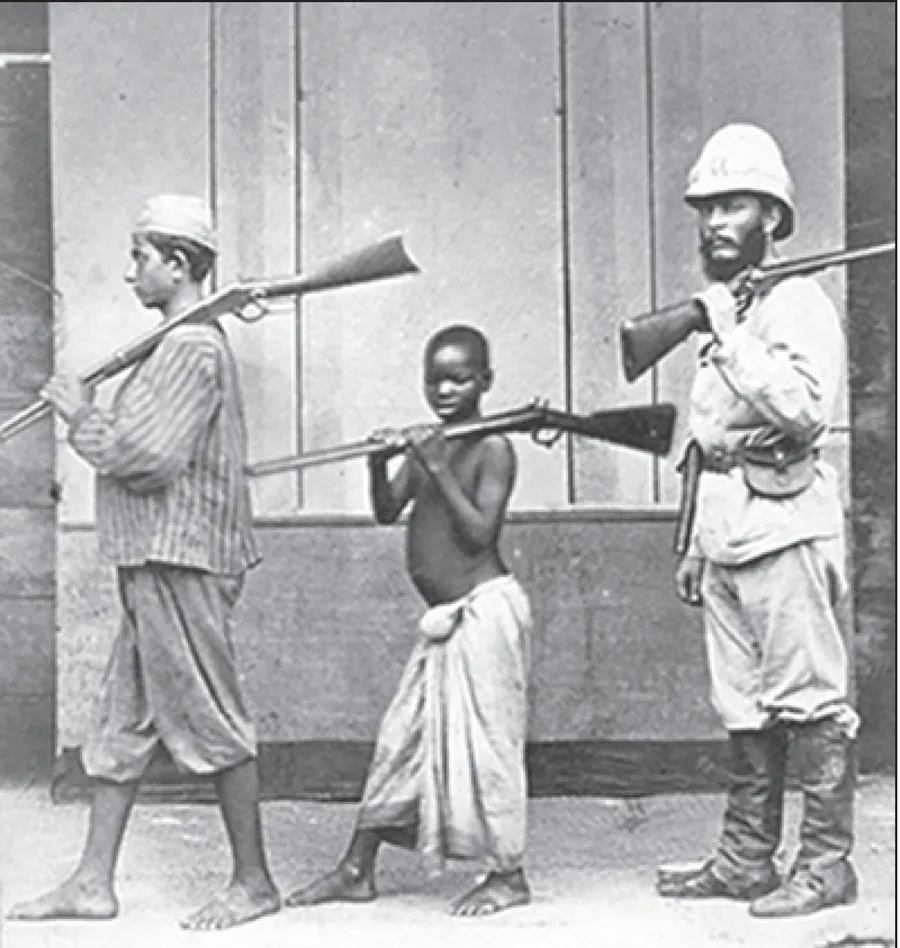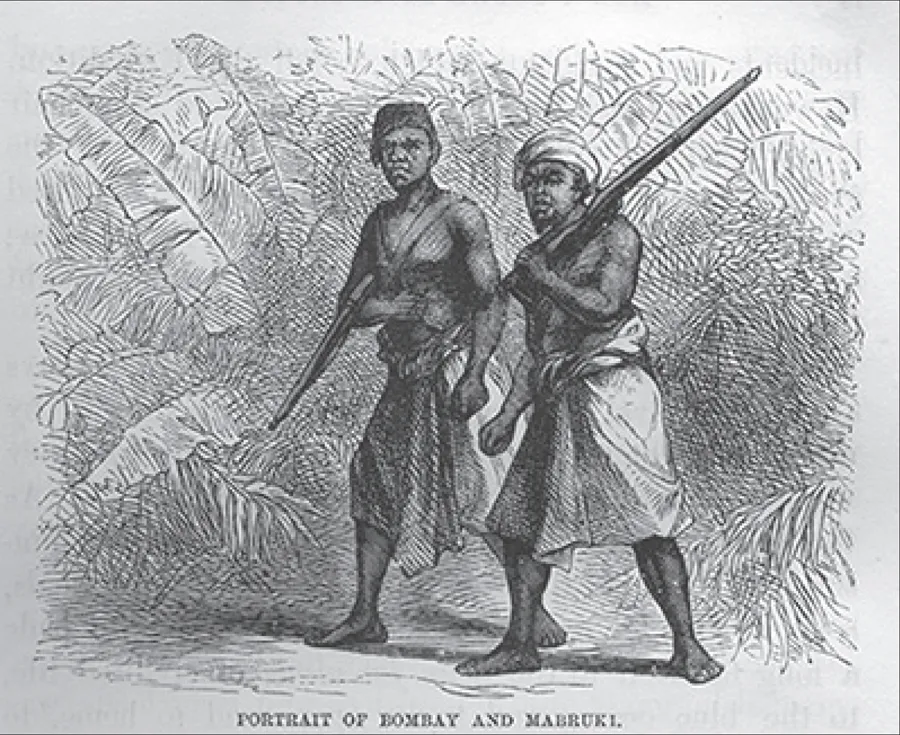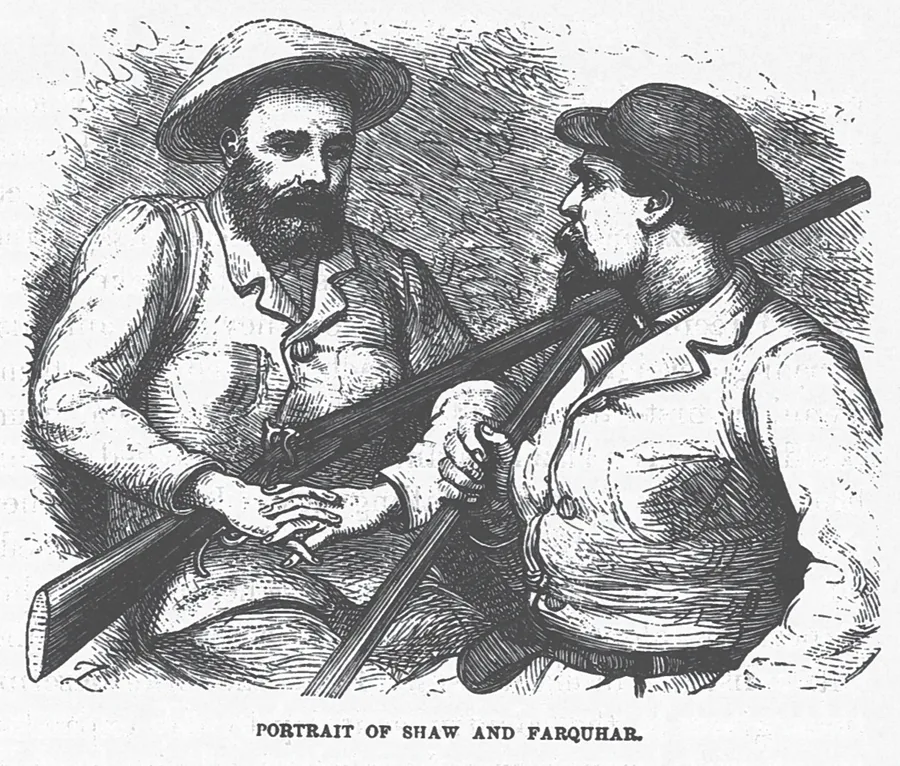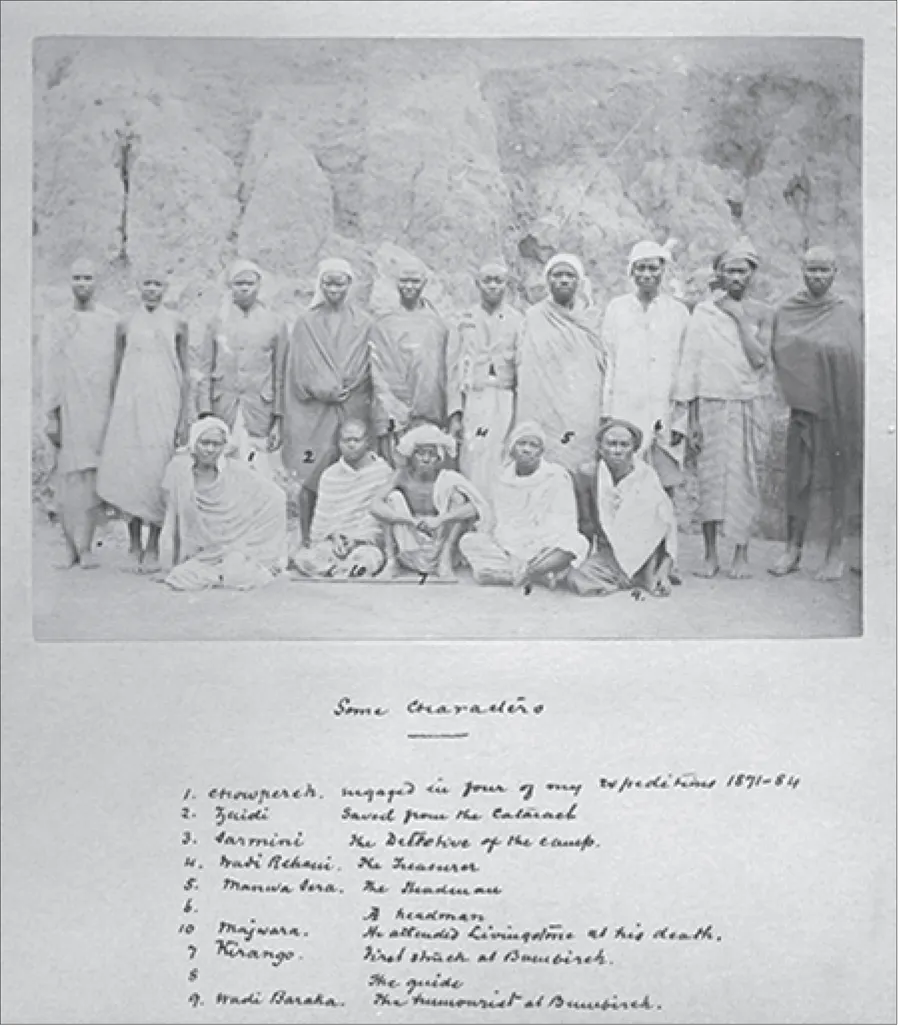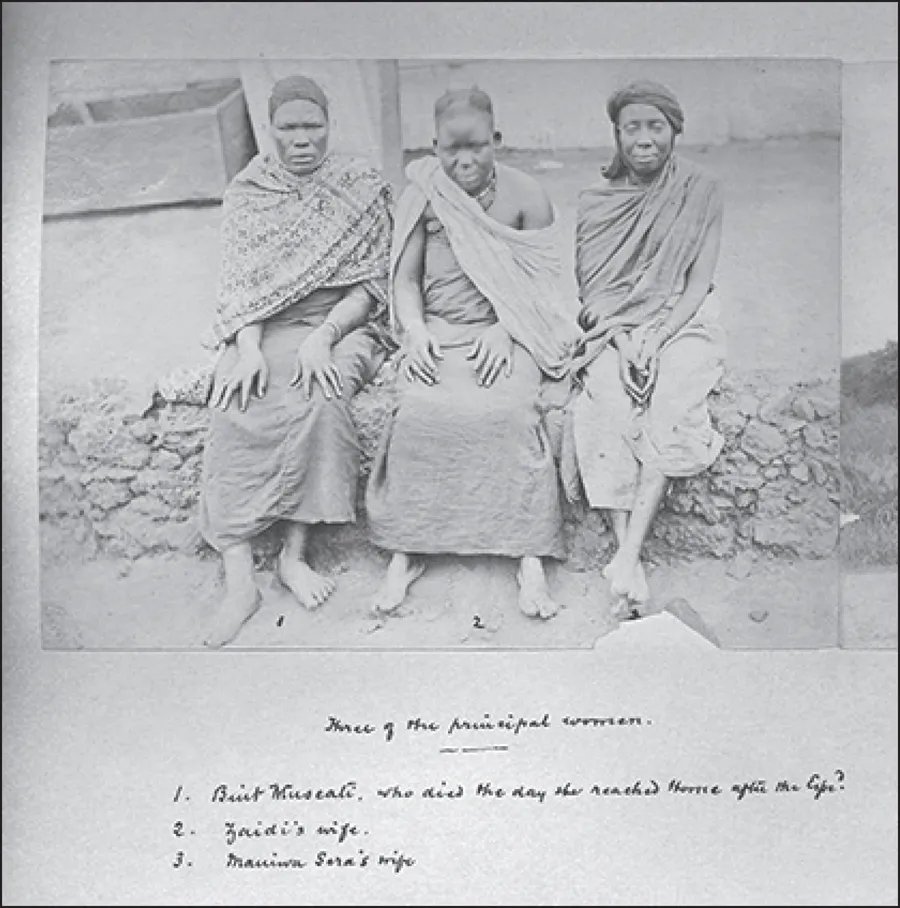![]()
Main Characters and Contracts of Engagement
Plate 1. “James Gordon Bennett, Esq. Proprietor of the ‘New York Herald.’” From Henry M. Stanley, How I Found Livingstone: Travels, Adventures and Discoveries in Central Africa (London: Sampson Low, Marston, Low and Searle, 1872), facing page xv. Titles of the engravings from HIFL are as in the original edition (and not from the present editors).
Plate 2. Henry Morton Stanley in Constantinople, 1870, setting out after Livingstone. (Photo Album “Stanley,” S.A. 5153)
The Stanley Archives (S.A.), property of the King Baudouin Foundation, are held in trust at the Royal Museum for Central Africa (Belgium).
Plate 3. Stanley in 1872, carte de visite photograph, 8.5 x 6.1 cm; three-quarter view, mounted on card with ink inscription “Henry M. Stanley.” (S.A. 5159)
Plates 4a and b. David Livingstone (signature of David Livingstone on the back), carte de visite photograph, The London Stereoscopic and Photographic Company. (S.A. 5178)
Plate 5. Contract of engagement of Seedy Mubarak Bombay for the Livingstone Expedition; with countersignature of A. Sparhawk, U.S. Consulate, Zanzibar, February 2, 1871. (S.A. 4744)
Plate 6. Contract of engagement of Bunder Salaam, Celim, and Abdel Kadir for the Livingstone Expedition, with countersignature of Francis R. Webb, U.S. Consulate, Zanzibar, February 3, 1871. (S.A. 4745)
Plate 7. Enlistment of Saboori Mkuba, Saboori Mdogo, and Kombo, September 17, 1871. (S.A. 4748)
Plate 8. “Selim, the interpreter.” (HIFL, facing 352)
Plate 9. Stanley with Selim and Kalulu, July 1872, Seychelles. (S.A. 5236)
Plate 10. “Portrait of Bombay and Mabruki.” (HIFL, 69)
Plate 11. “Portrait of Shaw and Farquhar.” (HIFL, 121)
Plate 12. “Some characters. 1. Chowpereh. Engaged in four of my expeditions 1871–84. 2. Zaidi. Saved from the cataract. 3. Sarmini the Detective of the camp. 4.Wadi Rehani. The Treasurer. 5. Manwa Sera. The Headman. 6. A headman. 10. Majwara. He attended Livingstone at his death. 7. Kirango. First struck at Bumbireh. 8 The guide. 9. Wadi Baraka. The humourist at Bumbireh.” Captions are as given originally by H. M. Stanley. These pictures date from 1877 or after, and were taken at the end of the Trans-African Expedition. Many of the Trans-African Expedition members were Zanzibaris who had accompanied Stanley in his search for Dr. Livingstone to Lake Tanganyika, went back to the Coast with him, and reengaged in the caravan of supplies for Livingstone. (Photo Album “Congo,” S.A. 5154)
Plate 13. “Three of the principal women. 1. Bint Muscati, who died the day she reached home after the Expe[dition]. 2. Zaidi’s wife. 3. Manwa Sera’s wife.” (Photo Album “Congo,” S.A. 5154)
![]()
Journal S.A. 7, Full Transcript (1871)
[Inserted: Loose pages of Appendix to Lett’s Diary for 1871 containing a special “address to our subscribers…”]
[Left page torn in half, in pencil] Stanley
[Figures crossed out]
Henry M Stanley1
Travelling correspondent of the “New York Herald”. 1871.
This book was purchased in Bombay, store of MacKer Vining & Co. It is intended to contain as much information respecting myself as may be condensed to the limits of the pages within. Henry MS.
Letter paper 8-1/22
My Russian Friends3
Miss E. Farquhar
10 Henderson Place
Ferry Road
Bormington
Edinburgh
[Right page]
Descriptive order for bookseller
Arabs, Hindoos, Parsees
| Margharsh bin Said4 | Sultan of Zanzibar |
| Ladha Damji5 | Collector of Customs |
| Taria Topeen6 | Merchant |
January 1 Sunday, 1871
[Ink] At sea, on board whaling schooner “Falcon”.
Capt Josiah Richmond New Bedford, 126 Tons, bound from the isle of Mahe, Seychelles, to Zanzibar. 19th day out. Calms, squally weather & contending against the currents serve to lengthen the voyage. Longitude 51°, Lat 4° 30’
Explanation. On the 13th of October 18707 I left Bombay in the Bark “Polly” for Mauritius, accompanied by my Boy Selim8 of Jerusalem who is to act as my interpreter with the Arabs, and one young black & tan pup then 2 months old, called Omar.9 My intention was to proceed to Zanzibar E. coast of Africa, and then if my money which I expected from the “New York Herald” Agent (Douglas A. Levien, 14 Cambridge Square, Hyde Park, London) had arrived care of Dr Kirk, or Consul Webb,10 as directed, I would go to the interior to Lake Tanganyika, Victoria N’Yanza, Albert N’Yanza, in search of Doctor David Livingstone the Great Traveller, for this was my commission from James Gordon Bennett Jr. given to me verbally at the Grand Hotel, Paris, Oct. 28th, 1869.
On my arrival at Mauritius no vessel proceeding direct to Zanzibar, I sailed for the Seychelles Nov. 21st 1870, per Schooner “Romp” with Wm Lawrence Farquahar,11 late mate of the “Polly” whom I engaged as my Navigator Assistant through Africa, and the Arab boy Selim, and my dog “Omar”. We arrived at Mahe 9th December. On the 14th December last we sailed from Mahe for Zanzibar per Brigantine “Falcon” as above stated.
January 2 Monday, 1871
On board the “Falcon”. At sea
Sailors are as is well known difficult to please. This is proverbial. Yet I hardly imagined that a sailor any more than a man of any other profession could be so blind as not to appreciate a benefit, and a good position promising good pay, plenty of change & easy work. My head man, and assistant Farquahar is a sailor, intelligent after a fashion, and understands his business as first mate very well so far as I can judge, but he is no exception to the rule above stated. He has been remarkably sulky since he has been on board, taciturn, and reserved with me, and apparently unwilling to work, no matter how trivial the job. My boy Selim wanted some clothes very badly and I purchased from Captain Richmond some Twill stuff enough to supply him with a pair of serviceable Turkish Bags. Upon asking Farquahar to make a pair for him, he raised a great many objections. Quoting his words, he did nit12 see what the h-ll13 such things were for, it was only a d—d barbarous nation which wear such things. It was in this snorting, growling dissatisfied spirit that he went to ...


